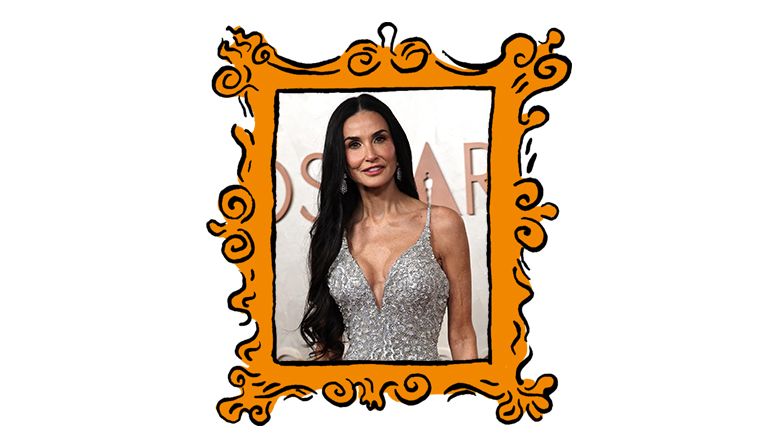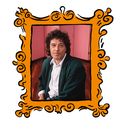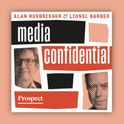The last time this many women over 50 were nominated for Best Actress at the Oscars, the first iPhone, the final Harry Potter book and the premiere of Keeping Up with the Kardashians were still months away. Fast forward 18 years, and Demi Moore, 62, Karla Sofía Gascón, 52, and Fernanda Torres, 59, are three of the five 2025 Academy Award nominees for Best Actress in a Leading Role, as announced a few weeks ago, ahead of the actual ceremony on 2nd March—and are amongst the wave of women their age dominating this awards season.
This trend isn’t limited to the Oscars: Angelina Jolie and Kate Winslet, both 49, were the youngest nominees for Best Actress in a Drama at the Golden Globes, amongst a cohort that included Pamela Anderson, Nicole Kidman and Tilda Swinton. Moore won Best Actress in a Comedy; Isabella Rosselini has received multiple nominations for her role in Conclave; and, outside of awards, Renée Zellweger, Marianne Jean-Baptiste, Julianne Moore and Penélope Cruz are all set to lead big films in 2025.
Where Hollywood’s gents age into “silver foxes”, the women of Beverly Hills have traditionally only been given the option of playing grandmothers or villains if they want to maintain their spot in the industry after their first grey hair appears.
Looking back to 2007—the last year three women over 50 received Best Actress nods—Meryl Streep, Helen Mirren and Judi Dench were nominated for their roles as Miranda Priestly, Queen Elizabeth II and Barbara Covett. While those performances have become iconic, they largely reinforced Hollywood’s limited vision of older women at the time: the cruel boss, the regal matriarch and the lonely, bitter spinster.
Things do feel different now; a woman in her sixties as the star of a satirical horror (The Substance) and the first openly trans woman to be nominated for an Oscar (Gascón) reflect a significant evolution in the representation of womanhood post-50.
But while these developments are encouraging in themselves, it’s still worth asking questions. What version of womanhood is being represented and celebrated here, for instance? And does this wave of recognition point to structural change, a trend, or is it merely a blip or tokenism?
Last month, Moore went viral for her Golden Globes acceptance speech. “I thought a few years ago that maybe this was it,” she said, “Maybe I was complete. Maybe I’d done what I was supposed to do. And as I was at kind of a low point, I had this magical, bold, courageous, out of the box, absolutely bonkers script come across my desk, called The Substance, and the universe told me that ‘you’re not done’.”
The Substance is about an Oscar-winning actress, Elizabeth Sparkle, who is fired from her aerobics TV show when she turns 50 and ends up taking a drug that creates a younger version of herself. “We need her young, we need her hot, we need her now,” Dennis Quaid’s producer character says while moving on from (elder) Sparkle. “How the old bitch has been able to stick around for this long is a mystery to me.”
This idea of being “done” or written off by society is the starting point of many of the films these women have been nominated for. The Last Showgirl is about a middle-aged Vegas showgirl whose revue is forced to close; the latest Bridget Jones finds Bridget as a widowed mother reluctant to re-enter the dating world; Hard Truths is about a depressed and anxious woman who is resentful towards her husband and son.
While the increasing visibility of women over 50 is a welcome change, there is something less welcome in the persistent focus on their age. In Babygirl, Kidman plays a high-powered CEO who embarks on an affair with her twentysomething intern. While it was advertised as a transgressive and erotic subversion of gender power relations, it ended up being a reductive portrait of a middle-aged woman dissatisfied with her marital sex life who, despite heading up a large-scale automation company, actually wants to be dominated by someone with an under-developed prefrontal cortex.
The desexualisation of women over 50 is something that does plague Hollywood. From 2010 to 2020, less than 10 per cent of characters who were over 50 were shown holding hands or kissing in US-made films, and less than 3 per cent were shown being intimate, according to a report by the Geena Davis Institute.
So, yes, having a character who is a mother, wife and approaching her sixties finally finding sexual satisfaction is rare—and perhaps important—to see on screen. Yet it’s still hard to believe that Babygirl is anything more than a titillating fantasy designed for shock value rather than a meaningful exploration of a woman’s sexuality and agency. Its return to cinemas, last week, for Valentine’s Day only underlined the point—this film is in the business of light subversion and cheap thrills.
So where does this leave us? Well, I would say that it’s a start—and perhaps a good one. There is still, of course, a huge amount of room for greater diversity in Hollywood’s output—and not just when it comes to women’s ages—but we should not ignore the happy fact that, during this awards season, the characters these women are playing are not just mothers or witches. Like any other demographic, it is important that women over 50 see their experiences, issues and lives portrayed on screen, while also not having every character defined by these limitations.
It is just that we are not quite there yet. True progress will come when roles for older women are no longer exceptions or acts of reclamation but are instead part of the industry’s everyday fabric. And here’s hoping that we never again have to see anyone of Kidman’s calibre crawling on all fours to lap milk from a bowl…
Hollywood and the fifty-plus woman—progress or pretence?
Producers and awards voters are finally starting to right some of the industry’s wrongs. But there’s still a long way to go...
February 20, 2025

Demi Moore at the 2025 Oscars © ZUMA Press, Inc. / Alamy









